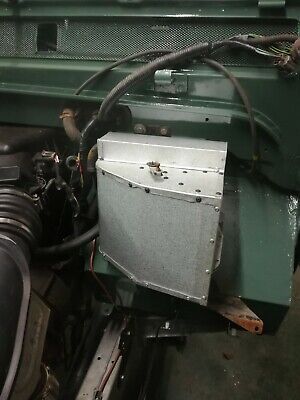Thats a good way to get gassed or in a 2cv's case, a way to fill the cab with a hot oily smell

VW aircooled bus/beetle has heat exchanges on the exhaust because it has no coolant to run a heater matrix from that connect to floor ducts that meander their way up to the front of the cab, but they too rot with time and eventually send gas into the cab.
On the guy building a rod/custom with ceramic heater. I'd bear in mind that the average street rod/custom doesn't get used in -10 when its snowing like a landrover, so most of the time the heater is cosmetic for the mot tester.
Also I was under the impression that defender alternators are regular externally excited units. In that they have no magnets, and the regulator switches on and off a coil to energise (excite) as a electromagnet . So when there's no demand the coil isnt energized and there's no magnetism to cause load/drag on the engine.
My 90 makes enough heat with a standard heater.

